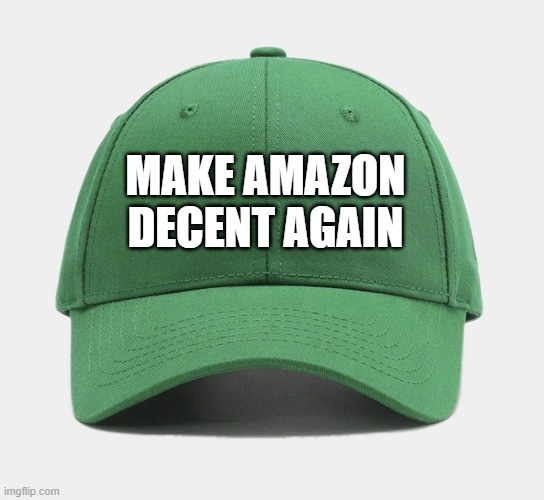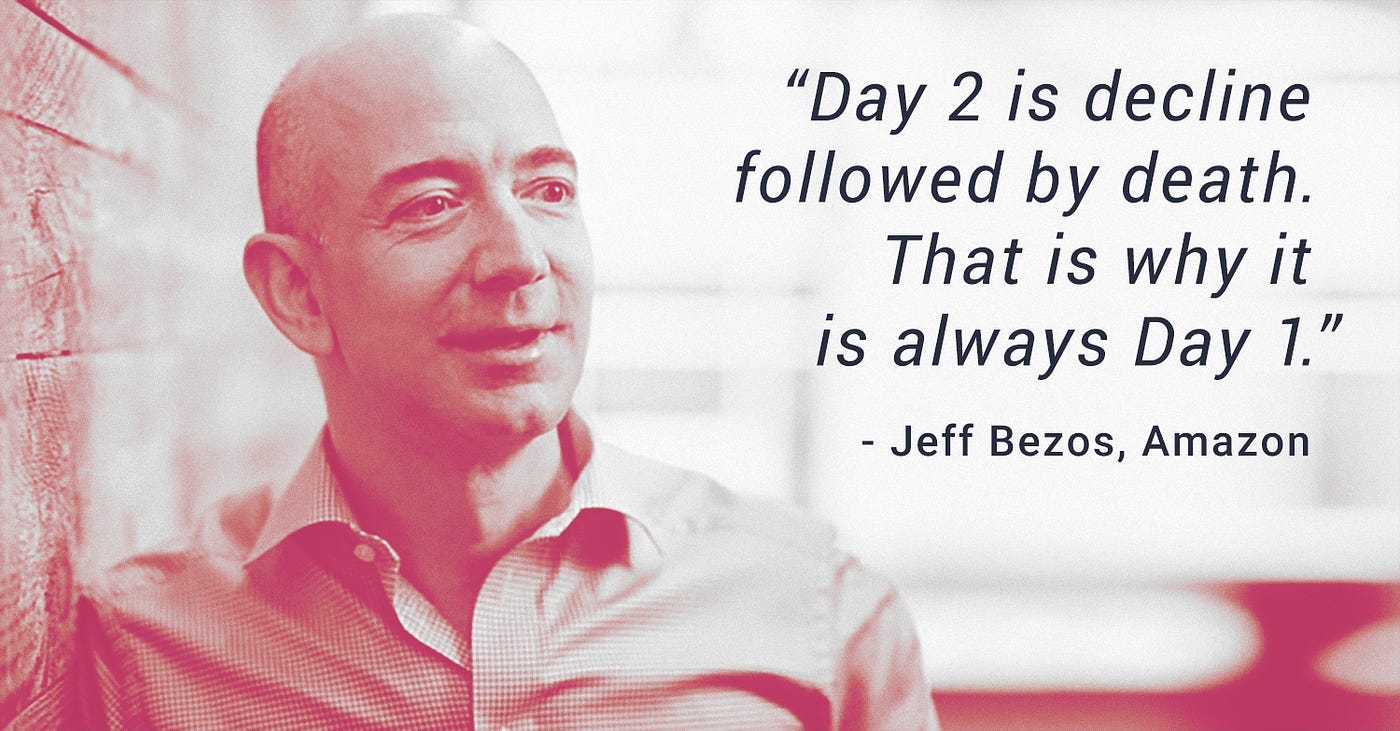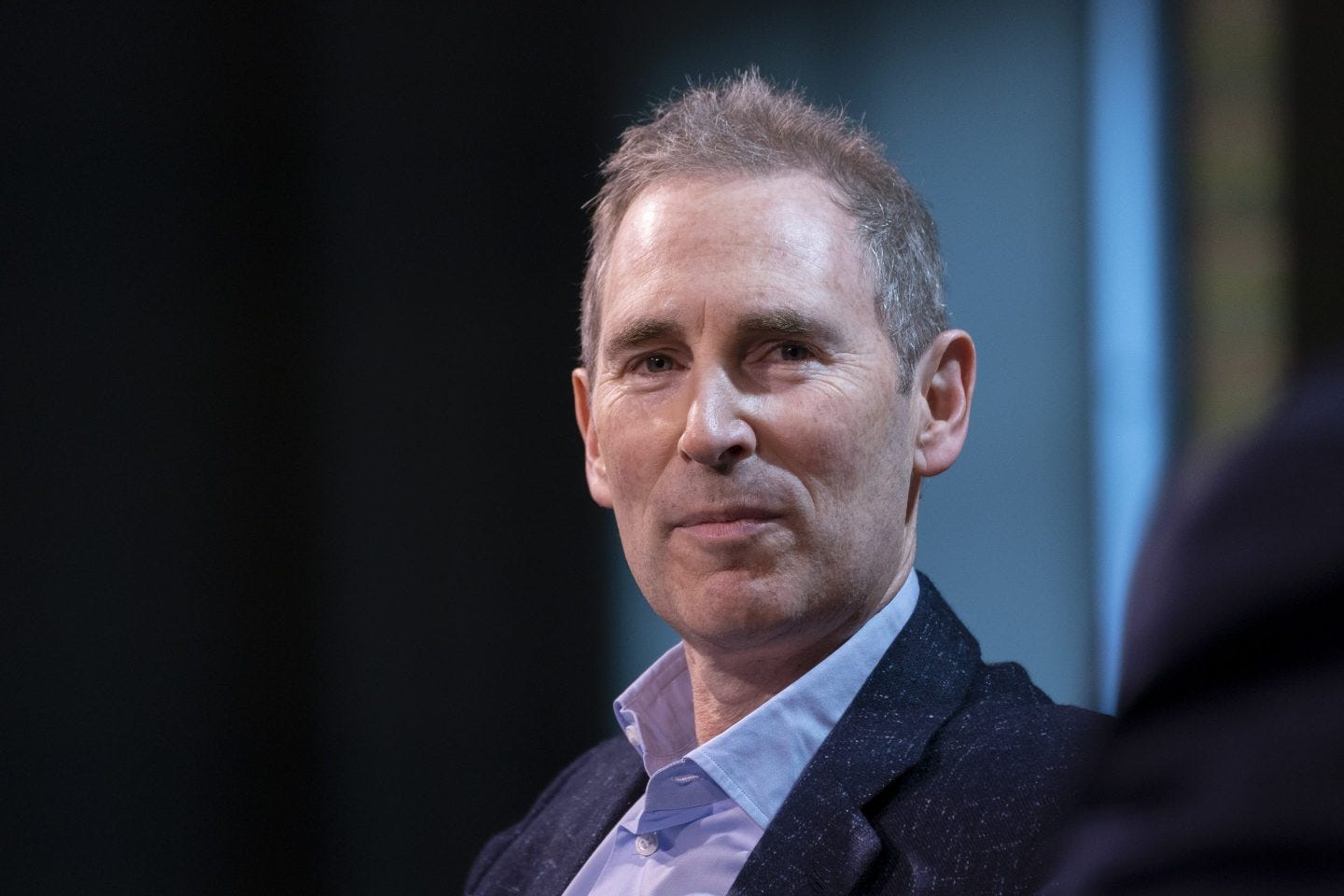Wasting Light: Amazon's Green Gap
Contrast between climate word and deed denotes broader culture problem
It’s important to care about Amazon’s corporate conduct and culture.
Amazon employs a lot of people. It leads retail and labor markets. What it does gains legitimacy and is mimicked by others.
In Amazon’s early years, Jeff Bezos sought to ingrain leadership principles (LPs) to help the company stay sharp and in touch with its founding ideals. For a while, it more or less worked. Whatever else might be true, daily life was anchored to a body of principles. They prevented derailments sometimes. They kept Amazon scrappy, quick, and practical.
Since Bezos left, turmoil has engulfed Amazon. The business model is under pressure from regulators, plaintiffs, labor movements, and market shifts. There is a sense of intellectual staleness. Uniformity and compliance are ascending. Creativity and collaboration are receding.
For many, it’s starting to feel like the massive, miserable bureaucracy Bezos had worried about. Like Day Two, the Amazon equivalent of shopping for a grave plot.
Internally, principles meant to tether Amazon to something sturdy are being hollowed out, cast aside, or weaponized by executives. This is something I noticed as an insider and continue to hear from others.
Jason Del Ray from Fortune wrote about the LPs recently. The tone of his coverage was balanced and measured.
I intend the same, but publish my bias up front to keep my message honest.
When it comes to Amazon’s LPs, the evidence available to me suggests:
They are devolving from operational to aspirational, or maybe just wallpaper.
This is because the mechanisms to make them operational are eroding.
Executives are not addressing that erosion.
This is because they prefer the LPs as rhetoric rather than reality; a PR and propaganda tool designed to pacify stakeholders while strategies fundamentally contrary to the LPs are pursued.
When it comes to the LP “Success and Scale Bring Responsibility,” Amazon is not merely neglecting its stated commitment, but acting contrary to them, covering itself with deception and opacity.
We’ll come back to these propositions at the end. First, a brief story.
Part I: Light and Dark Meet
In 2022, I was a General Manager in Amazon’s UK operations network. My job that year was to launch a state-of-the-art warehouse in Liverpool.
Six months prior to launch, I toured the facility with the engineering and project teams responsible for overseeing construction. The purpose of the walk was to understand any risk to the timeline and to audit the quality of the work so far.
Important to flag here that there is a built-in divergence of interests in situations like this. Project and engineering teams are interested in building to spec, staying on budget, and keeping things simple.
Operations leaders like me are interested a building that can foster an effective operation and positive work experience. I was hiring a thousand employees to deliver a new business in their community. My interest was getting Amazon the best and smartest operational outcome for its investment.
During the tour, my team and I noticed something interesting.
The facility had miles and miles of library shelves for Amazon inventory. It was a massive space set across five stories and consuming the equivalent of more than a dozen football pitches. Every few yards, an overhead light was installed.
The lights were designed to minimize energy use. Their LED cells clicked on automatically when the sensor detected an approach, and turned off automatically when the area was again motionless. This was an important feature given that tens of thousands of these lights would be installed.
The interesting thing we noted in the finished section of the tower was that the lights were staying lit for a long time after we’d left an area. Humans walk at just over a meter/second, so within a few seconds there is a safe enough distance that lighting is no longer required, either practically or by policy.
We did the math and recognized that by cutting the activation time in half, we could save tens of thousands of pounds in annualized electricity cost while reducing our environmental impact substantially.
Since 12% of the lights had already been installed, some labor would be involved in taking them down to be adjusted and reinstalled. But for the remainder of the project, adjustment could be done prior to installation, making this almost a free hit with all upside.
We raised a proposal through the engineering team, who retained ownership and authority over the project until it was handed to me several months later.
The proposal was refused on the ground that it differed from the agreed engineering spec. I challenged, arguing that the intent of the spec wasn’t to leave money or environmental responsibility on the table for the sake of compliance. We presented a convincing and coordinated case showing the financial and environmental benefits.
A response to that challenge was delayed. I instigated and pushed. Finally, after a month had gone by and 15% more lights had been installed with the wrong setting, a call was scheduled. The individual with approval authority did not attend the call, and therefore no decision could be made.
After more delay, more unnecessary escalations, and more traded volleys, another call was scheduled. It was then cancelled. A million more issues materialized, and this one fell down everyone’s target sort.
As the project neared its end, I brought the proposal back for one more pass. It was declined, this time on the basis that the labor necessary to adjust the already installed lights would result in a return on investment beyond the two-year point. Which took it out of launch scope.
The reality is that the team with authority to do the right thing was just lazy. But like most lazy people, they ironically burned more energy avoiding work than they’d have burned simply doing it.
But in that version of Amazon, compliance was the rock to the scissors of ingenuity.
Bureaucracy won and common sense lost. Thus accrued another victory to the nameless, faceless, tacitly conspiratorial, self-defeating, gutless shepherds of nonsense who specialize in turning every opportunity for joy into a bleak maze of torment.
They took a simple, sensible, materially important opportunity and punted it deep into the tall weeds.
A veteran of countless catch-22s, I felt the familiar, blood-pressurizing, forehead-wrinkling exasperation of bureaucratic chicanery.
I could make this a lot more banal by pulling apart the intricacies of Amazon’s management and authority structures to explain the alchemy which prevented a director-level operations leader from simply making an easy decision. But it’s needless because the essential truth is obvious.
Which is, at the physical point where a yearning for light is darkened, we find the hand of management malpractice at work. And where we find that hand, we will find it pushing say and do continually further apart.
Part II: Hollow Words
Something I learned in my Amazon time is that for words to become actions, leaders must install mechanisms.
A mechanism to drive an action makes it routine and habitual until it becomes self-sustaining. Without a mechanism to drive it, an approved proposal, executive decision, HR policy, or leadership principle remains an abstract vestige of a conversation. Nothing more.
For example, Amazon has a leadership principle called Deliver Results, which is about excellence and continuous improvement in execution. One mechanism to assure this principle is a report at the end of shift detailing performance along a series of criteria. This forcing function helps teams understand and improve iteratively, and provides the healthy pressure of accountability.
When Amazonians complain of a hollowing of the LPs, they refer to a lack of mechanisms. All feathers, no teeth.
Move the story I’ve unfurled close enough to the skin of several LPs, and their internal hollowing is illuminated.
Frugality is about staying thrifty. About treating company money like it’s your own. About recognizing wealthy companies don’t stay wealthy when leaders are careless with resources. If launch teams are not graded partially on frugality, there is no mechanism to make it real.
Bias for Action is about aggressively seizing opportunities. If this gets a team a shrug rather than a reward, the mechanism to make it real is missing. It dies.
Environmental responsibility is something Amazon insists it cares a lot about, expressed via its “Success and Scale” LP. But at the executive level, where modelling behaviors and making decisions sets the tone for the whole company, this commitment was toothless. There was no mechanism to force environmental consciousness into launch projects.
Most distressing for me, and one of the alarm signals that got me thinking about leaving the company and selling my shares, was the breakdown of the decision process itself. I had seen this pathology before and know its impacts.
Disagree and Commit provides a mechanism for breaking deadlocks and navigating tough decisions where consensus is elusive. Everyone argues, a decision is made, and everyone commits together to it.
But the trap door in this LP is that no one need disagree if they can avoid a debate in the first place. If they can do so for long enough and they own the default position, they can simply wait out the opposition.
In my launch scenario, no mechanism existed to ensure an operations leader could get an audience for a debate. If the burden of debate can be avoided by the empowered, you’re a mislabeled dictatorship.
But when autocracy is modeled by the CEO himself, others will follow suit. Andy Jassy’s refusal to support his decision on remote workers returning to the office is emblematic. He threatened their jobs instead.
This story is about one proposal during one project. But the pattern evinced had gone from rare to prevalent by the time I left in 2023.
The hollowness people are talking about is real. The impact is profound. It means expectations are no longer stable. Strategy is no longer tethered to a ballast to hold common purpose and identity in place.
This creates two results, both toxic.
Unbound by principle, executives make decisions purely based on their own perspectives. They drive decisions with authority rather than principle.
The psyche of the rank-and-file is fractured by the dissonance between what they’ve been told is important and the divergent decisions and policies they see unfolding.
When you’re only as good as executive authority, you’re not very good. Especially if executives are not promoted based on character or principles, but how well they play an intricate political game.
Part III. The Say-Do Gap
Reading Amazon’s publicity about its commitments to climate responsibility and greenness, the impression is convincing.
The data points paint a picture capable of persuading shareholders, customers, governments, and the general public of a strong environmental philosophy.
This post from Amazon VP Stef Perego lists “wins” from a company-authored report. Similar posts from other executives were shared across social media, crowing proudly about Amazon’s greenness.
Unfortunately, it’s deeply misleading.
Accuracy of a company’s position on this issue matters. However they feel about climate change and sustainability, consumers, voters, and shareholders should be making their decisions based on facts. Not PR spin or propaganda.
In that spirit, here are nine additional data points to help understand where Amazon actually stands on sustainability.
Amazon has massively expanded its contractual relationships with the fossil fuel industry in the past few years. Cloud computing technology provided by Amazon Web Services (AWS) is helping companies streamline their drilling operations and optimize their equipment and supply chains. This is making extraction far more efficient, drawing more out of the ground more rapidly than ever before.
Below is an excerpt of Jassy celebrating Amazon’s role as a fossil fuel force multiplier. Again, whether you “like” green energy or “dislike” the fossil fuel industry, the point is that Amazon says it’s married to one while it’s clearly in a relationship with the other.
Amazon donates to the political campaigns of both major parties, including candidates who don’t believe in climate change. This has always been the case. Everyone does it. That doesn’t make it less hypocritical.
Amazon has, in the past, fired employees who formed affinity groups and pooled their voices to criticize the company’s climate platform.
Amazon abandoned in 2023 its “shipment zero” pledge of making all shipments net-zero by 2030. There was no announcement about dropping this previously important and widely proclaimed commitment. It simply disappeared from the company website.
Amazon’s emissions are growing, not shrinking. They’ve risen 40% since it made its “Climate Pledge” in 2019, and are diverging from the commitments contained in that pledge.
Amazon drastically under-reports its carbon emissions from product sales. Inexplicably, it only reports the carbon impact of Amazon-branded products, which is about 1% of everything it sells. This is a ridiculously dishonest omission.
If you buy a TV from Target, for example, Target counts that TV in its carbon emissions tally. This creates an obligation to improve emissions over time. By obscuring its position, Amazon prevents anyone knowing its position, which makes accountability impossible.
Adding a layer of grime is that some of these uncounted products are labeled “Climate Pledge Friendly” on Amazon’s website. Many customers believe they’re making decisions that support something they care about. But they’re being made fools.
Amazon drastically under-reports the carbon impact of employee transportation by only counting the commutes of corporate employees. Around 75% of employees don’t work at corporate headquarters, but in its network of warehouses, distribution nodes, and delivery stations.
This again is deeply dishonest. It’s especially cheeky given Jassy’s insistence that corporate employees return to physical offices instead of working from home, which would be more consistent with its stated climate intentions.
Amazon successfully lobbied Oregon lawmakers to quash a proposed law which would have held its data centers to the same clean energy standard as public utilities. It uses by far the lowest renewable energy share of the big three cloud computing companies.
Amazon received an “F” grade for its total lack of energy transparency in a comparative study of the cloud computing industry.
See here for more detail, as well as here, here, here, and here.
Conclusion
I’m no climate change warrior. Having spent a couple decades burning more fossil fuel than most people would burn in ten lifetimes, I’ve got a VIP box reserved in the Hell constructed especially for polluters.
But that’s not the point.
The point is that a company is better off not having stated principles than to have and defile those principles. Doing so makes fools of people and is just plain wrong. It also makes people miserable, most of all the employees who rely on company commitments to stabilize their expectations.
The mechanisms that make Amazon’s LPs real are eroding. As the launch lighting story illustrates, those mechanisms are disappearing, and executives are not replacing them.
This means the LPs are no longer operational, but aspirational.
But actually, they’re not aspirational either. Because we can find clear and well-supported instances where there is no desire to make them real. Only a desire to say words that will pacify activists, separate investors from their wallets, make employees feel better about where they work, and keep customers clicking the buy button.
This devalues the LPs completely. Devaluation is a common impact of fraud in its various forms.
The LPs are being used as a smokescreen. But the more truth shines into that cloud of smoke, the more transparent it becomes. As Amazon’s say-do gap continues to broaden, it’s becoming more obvious.
When it comes to its Climate Pledge and adjacent issues, the record is clear and convincing. Amazon wants the benefits of being seen caring. But its actions demonstrate it doesn’t care, and thus won’t absorb the costs of doing so.
If it were just a matter of the company admitting it doesn’t really care about the environment in the way it has previously claimed, that would be bad enough.
But for investors, there’s something more serious going on here, and it’s Amazon’s increasing boldness and comfort with dealing dishonestly. With opacity. With obfuscation. With refusal to explain itself or seek the confidence of stakeholders. This reflects arrogance.
Where we such hubris and also see looseness with the truth becoming a feature rather than a bug, we often find criminality lurking not far behind.
Amazon’s green gap is a signal of a broader and deeper culture problem. It is a problem of choosing dishonesty over the decency that built its reputation.
Eventually, dishonest cultures result in unsustainable business, and fraud often becomes the last-ditch move to prevent collapse.
It’s a movie we’ve seen before, and we know how it ends.
Tony Carr is an independent writer, former Amazon operations leader, retired US Air Force officer, and American lawyer.














